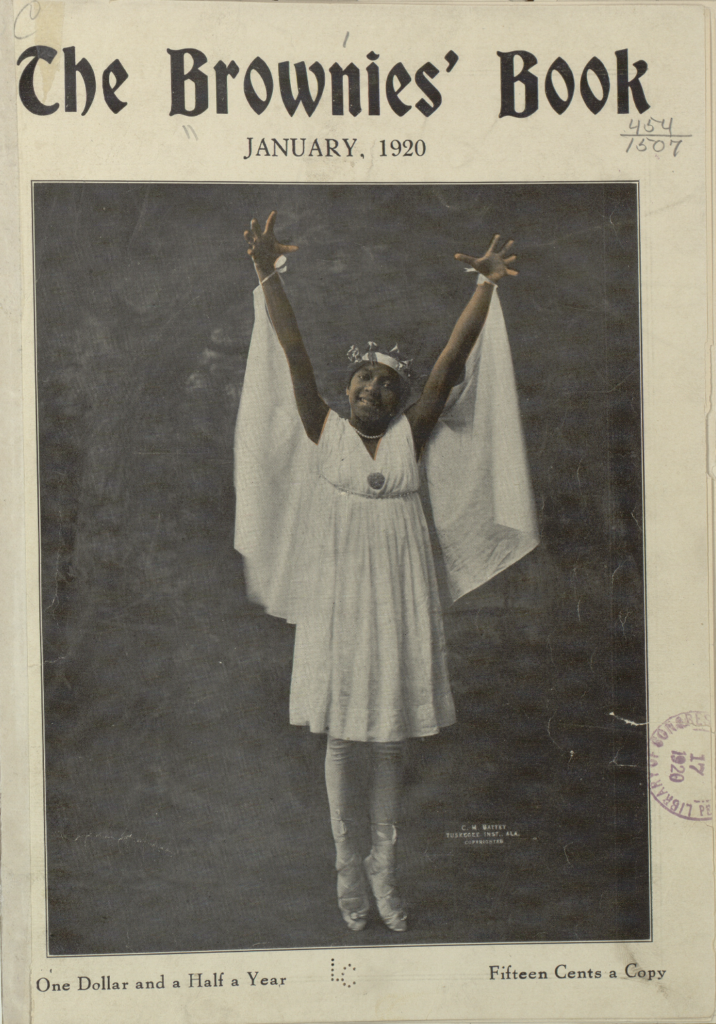Gyp: A Fairy Story
By A. T. Kilpatrick
Annotations by Catherine Bowlin

ONCE there was a little fairy named Gyp. The king of fairies gave all of the little fairies work to do. And Gyp’s work for that day was to paint apples.
Early that morning Gyp went to the forest to work. He carried all his paints, but more of red and brown because he had a lot of apples to paint red and also the leaves to tint brown.
He soon came to the trees, and leaving the other paints on the ground, he carried the red up to paint apples.
The little children who lived in the forest thought it about time to find ripe apples, and some of them went out that same morning to get some.
After roaming a bit they came to the tree where Gyp was painting and found all his paints on the ground.
They began to amuse themselves by playing with the paints, until the wind blew some apples down.
But they soon tired and fell asleep. Gyp had noticed them meddling with his paints and saw that they liked red and brown best.
When he came down and found all asleep, he wondered what joke to play on them that would be pleasing. So after deciding on many things and changing, he determined to paint their faces, knowing they would be delighted.
So he painted their faces,––some red like the apples, and the others brown like the leaves. When they woke and looked at each other, they were startled and amazed. They went home never knowing why their faces changed colors.
Now their descendants still live. Those children who were at home remained white, but the little red children still love to roam about in the forest and on the plains.
The little brown children can be found most everywhere, carrying happiness and sunshine to all they see.
So when you read of the work of the little brownies, don’t forget the good fairy Gyp.

Kilpatrick, A. T. “Gyp: A Fairy Story.” The Brownies’ Book, ed. W. E. B. Du Bois, vol. 1, no. 1. (1920): 31. www.loc.gov/item/22001351/.
Resources for Further Study
- In the introduction to the 2019 volume of The Lion and The Unicorn, a contemporary journal that studies children’s literature, Katharine Capshaw and Michelle Martin draw parallels between The Brownies’ Book and the Black Lives Matter movement. Full citation for this source: Capshaw, Katharine, and Michelle H. Martin. “Introduction: From The Brownies’ Book to Black Lives Matter: One Hundred Years of African American Children’s Literature.” The Lion and the Unicorn, vol. 43, no. 2. (2019): v-vii. ProQuest, https://login.libproxy.uncg.edu/login?url=https://www.proquest.com/docview/2330797298?accountid=14604, doi:http://dx.doi.org/10.1353/uni.2019.0015.
- For an analysis of fairies in The Brownies’ Book, see Fern Kory’s article, “Once Upon a Time in Aframerica: The ‘Peculiar’ Significance of Fairies in the Brownies’ Book” in the 2001 volume of Children’s Literature. Full citation for this source: Kory, Fern. “Once upon a Time in Aframerica: The “Peculiar” Significance of Fairies in the Brownies’ Book.” Children’s Literature, vol. 29. (2001): 91-112. ProQuest, https://login.libproxy.uncg.edu/login?url=https://www.proquest.com/docview/195575070?accountid=14604.
Pedagogy
Possible discussion questions:
- How does the positive diction in this story foreshadow its purpose?
- Can this text be considered an origin story? Why or why not?
- What does this story suggest about racial difference?